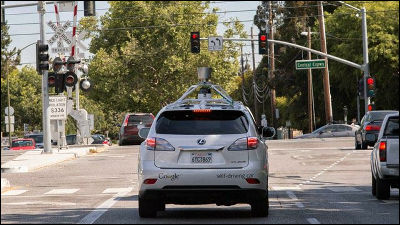Why is pedestrian-friendly road high in economic productivity?

byDavid Marcu
Urban development has various forms, and in SingaporeDevelopment of underground space, The whole in ChinaCovered with plantsThe development of the city is planned. Meanwhile, there are urban development that expands the roadway to set up a large shopping center, NPO that supports future urban development "Strong TownsFounder ofRachel QuednauSays that "those who enriched the sidewalk can economically grow the city at a lower cost" is claimed.
Why Walkable Streets are More Economically Productive - Strong Towns
https://www.strongtowns.org/journal/2018/1/16/why-walkable-streets-are-more-economically-productive
The fact that the economy of 'easy to walk' develops has been demonstrated by several studies so far. It took place in 2011(PDF file)A survey of the Australian National Heart Fund"The expansion of walking space increases the value of that area and has relevance to new business and land leasing.In addition there is also evidence that improving the environment of walking and cycling raises the value of private property There is stated, "In 2009, Mr. Joe Cortright of Economist issued it(PDF file)reportBut, it shows "how pedestrian-friendly the land is"Walk Score"Is increased by 1 point, the house value is said to increase from 500 to 3000 dollars (about 50,000 to 330,000 yen).
Also, the San Francisco State Transit Authority has released a report saying that "there are more expenses for pedestrians using public transportation or walking and walking than travelers traveling by car, they will spend per month" It is clear even if you see the reality that the place the traveler is walking around is commercially vital.
Consulting company specializing in community design and land value ·Urban 3Visited cities throughout the United States and compared taxation prices per acre, it turned out that taxable prices per acre are higher in locations that are more compact and easier to walk than those with affinity for cars. This can be said about big cities and small towns as well.
Illustrated in three dimensions of the taxable value per acre for Des Moines, Iowa, Lafayette, Louisiana, Redlands, California, and Traverse City, Michigan. The tax price per acre is much higher in the place with affinity for pedestrians for both.

In fact, the places where each city has "affinity for pedestrians" are as follows.

Common to these places are the following five points.
· There is no roadway with a narrow road width of 2 lanes or more. Also, as the parking lot is on either side of the road, the car can not help being slow.
· There are things that makes it easier for people to cross the street, such as sidewalks, crosswalks and signals.
· There is a shade of shade that provides pedestrians with coolness. (Points of particular importance in high temperature areas such as California)
· There is a shop in a shape facing the sidewalk, and it is possible to enter through. You can also draw attention from car drivers who run at the same speed as pedestrians.
· Because there are residents and offices are set up on the 2nd floor of the building, the tax value per building becomes higher.
On the other hand, the situation of the place with high affinity for car is as follows.

The following 7 points are common to these.
· There are wide roads with multiple lanes. Since there is no parking lot beside the road, the car can run at high speed.
· There are sidewalks when you look closely, but because the car is running beside the sidewalk, it does not seem to invite a pedestrian.
· Because the interval of the pedestrian crossing is wide or not found at all, the person who wants to cross the road must walk to a signal that is far away. Also, it is necessary to cross a plurality of lanes with traffic volume.
· There are no trees that provide shadows to pedestrians, only meaningless lawn.
- It is a big signal so that it can be distinguished also from among high speed cars.
· There is a huge parking lot in front of the commercial facilities. With this space it is possible to build more economically productive facilities.
· Building is one storey. In other words, the income underlying the taxable price depends on one business and is not concentrated in one place.
As can be seen from the above, Quednau says that the road that is friendly to pedestrians will revitalize the economy from the viewpoint of taxation prices and sales, but that economics is also a point of requiring less public investment I am talking. This is because the construction of sidewalks for installing trees and benches is less expensive and the long-term maintenance costs are lower than the construction of roadways that require the installation of large signals and payment for traffic patrols.
In other words, if you make sidewalks that can be used for 10 years or 100 years later, you can revitalize local business with less expenses, but not only will it cost money to complete the roadway, but the number of businesses that can support It tends to be less. Below are the buildings on the left side lined with buildings that last for more than 100 years, mostly with shops on the first floor and apartments and offices on the second floor and above. On the other hand, buildings on the right are made on the side of the road with affinity for cars and have only one purpose "restaurant".

Quednau says "laying roads friendly to the car temporarily fills in the place, but it may have disappeared after 10 years and will miss money from the town" as a pedestrian friendly road construction I am calling on you.
Related Posts:
in Note, Posted by darkhorse_log







